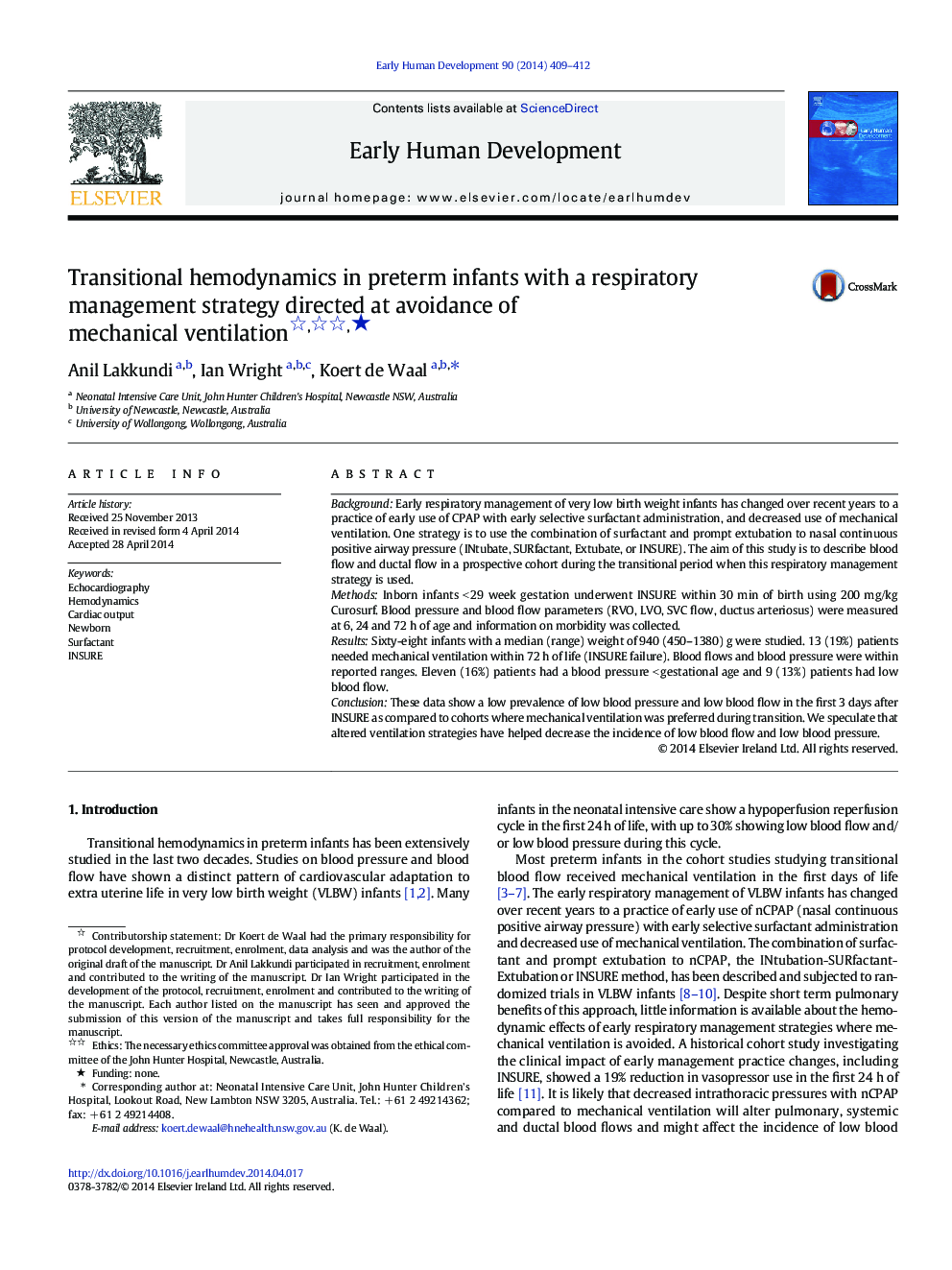| Article ID | Journal | Published Year | Pages | File Type |
|---|---|---|---|---|
| 3916529 | Early Human Development | 2014 | 4 Pages |
BackgroundEarly respiratory management of very low birth weight infants has changed over recent years to a practice of early use of CPAP with early selective surfactant administration, and decreased use of mechanical ventilation. One strategy is to use the combination of surfactant and prompt extubation to nasal continuous positive airway pressure (INtubate, SURfactant, Extubate, or INSURE). The aim of this study is to describe blood flow and ductal flow in a prospective cohort during the transitional period when this respiratory management strategy is used.MethodsInborn infants < 29 week gestation underwent INSURE within 30 min of birth using 200 mg/kg Curosurf. Blood pressure and blood flow parameters (RVO, LVO, SVC flow, ductus arteriosus) were measured at 6, 24 and 72 h of age and information on morbidity was collected.ResultsSixty-eight infants with a median (range) weight of 940 (450–1380) g were studied. 13 (19%) patients needed mechanical ventilation within 72 h of life (INSURE failure). Blood flows and blood pressure were within reported ranges. Eleven (16%) patients had a blood pressure < gestational age and 9 (13%) patients had low blood flow.ConclusionThese data show a low prevalence of low blood pressure and low blood flow in the first 3 days after INSURE as compared to cohorts where mechanical ventilation was preferred during transition. We speculate that altered ventilation strategies have helped decrease the incidence of low blood flow and low blood pressure.
